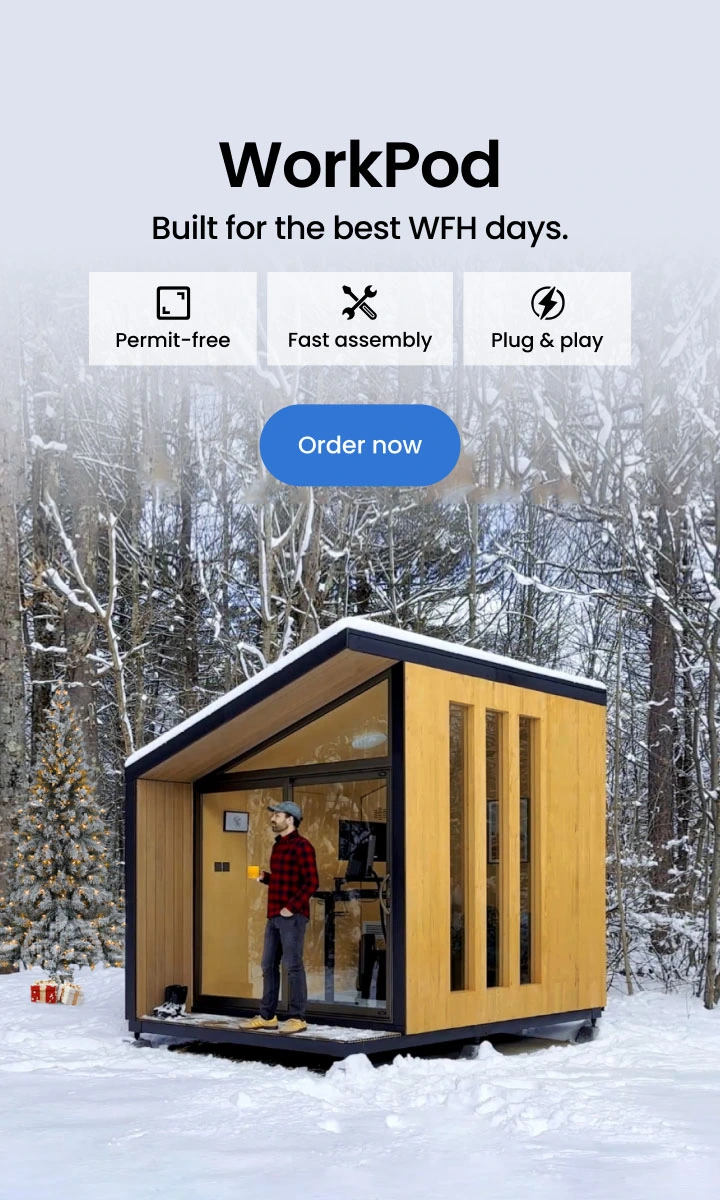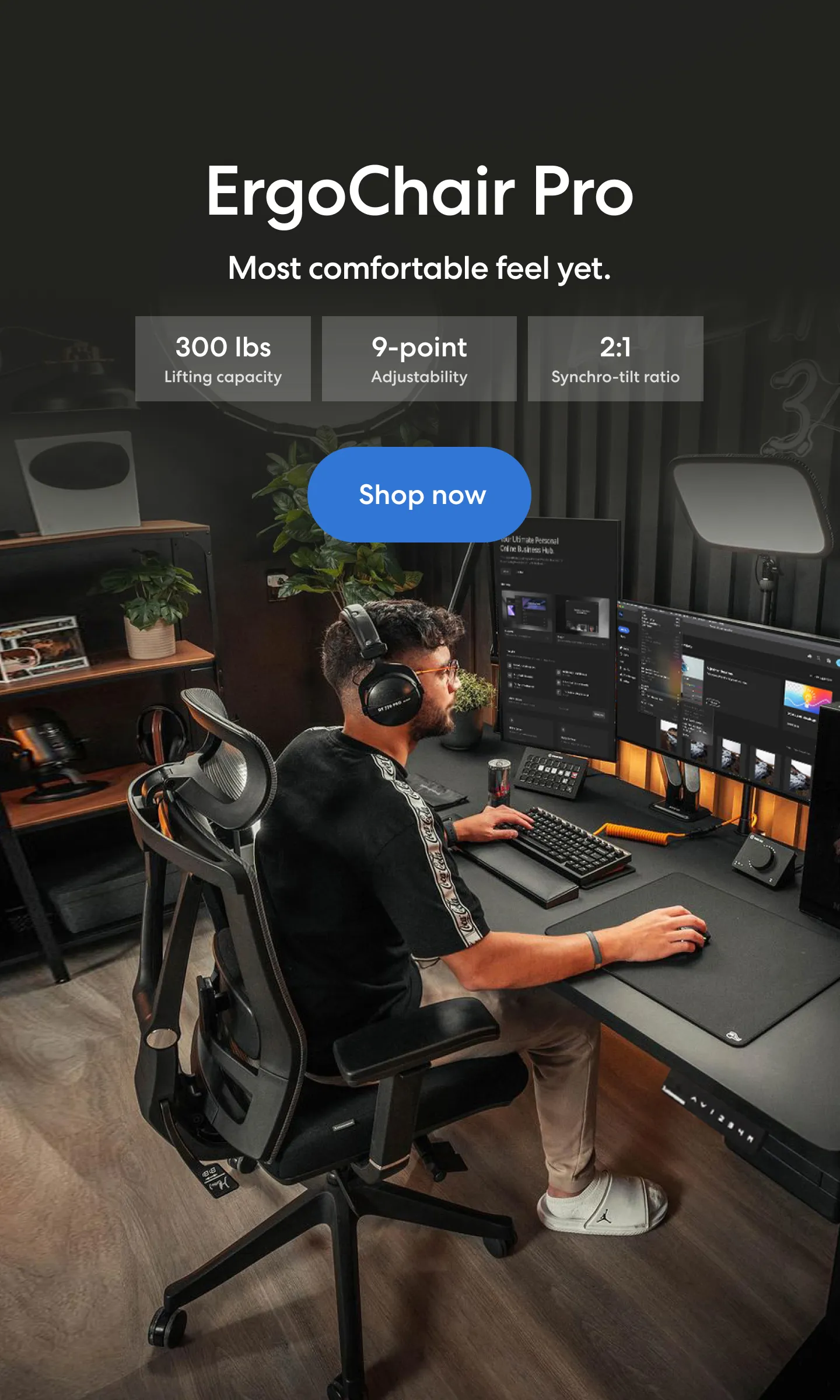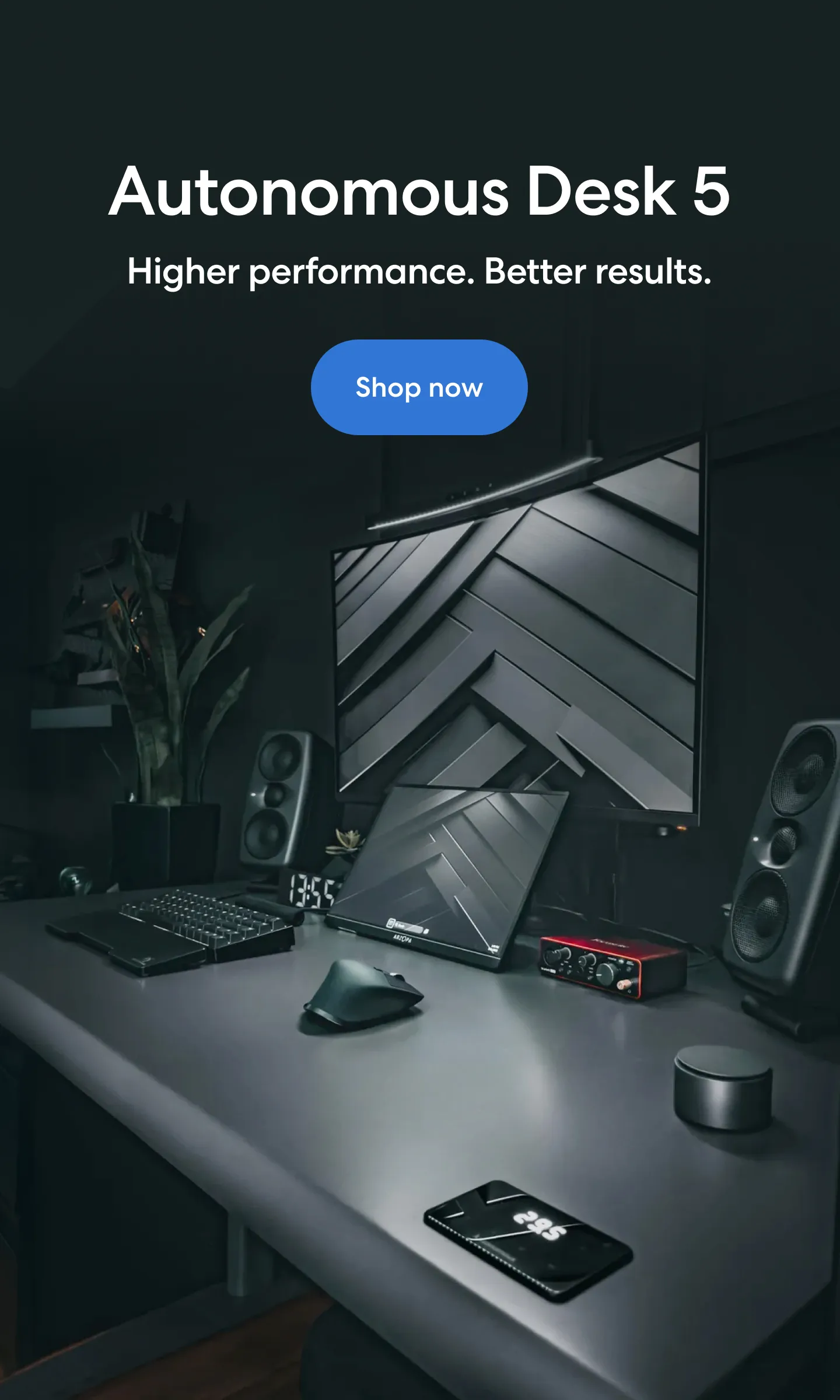
How To Soundproof Your Home Office: Effective Guides
Table of Contents
For remote workers, finding a peaceful workspace can often be one of the biggest challenges. From loud neighbors to children running around, the distractions can feel endless. Soundproofing your home office is one way to drastically improve the quality of your workspace.
If you’ve been wondering how to soundproof your home office, you’re in the right place. This guide will help you tackle the noise issues head-on, whether you're working in an apartment, house, or any space where noise is a concern.
Finding The Source Of The Noise: Inside Or Outside?
Before jumping into any soundproofing home office ideas, it's essential to identify where the noise is coming from in your home office setup.
The source of the noise will determine the best approach for reducing it.
Outside Noise
- Traffic: Cars, buses, and trucks can be a constant nuisance if you live near a busy street.
- Construction Noise: Neighbors or nearby projects can lead to hammering, drilling, and other loud sounds during working hours.
- Street Noise: People talking, dogs barking, or other urban noises can penetrate your home if your windows or walls aren't properly insulated.
Inside Noise
- Family Members/Roommates: Noise from other rooms, kids playing, or conversations can disrupt your workflow.
- Appliances: The hum of refrigerators, HVAC systems, and other equipment may add background noise to your workday.
- Echoes: Hard surfaces, like wooden floors or glass walls, can cause sound to bounce around, making it feel noisier than it actually is.
By identifying whether the noise is from outside or inside, you can tailor your soundproof home office ideas and methods.
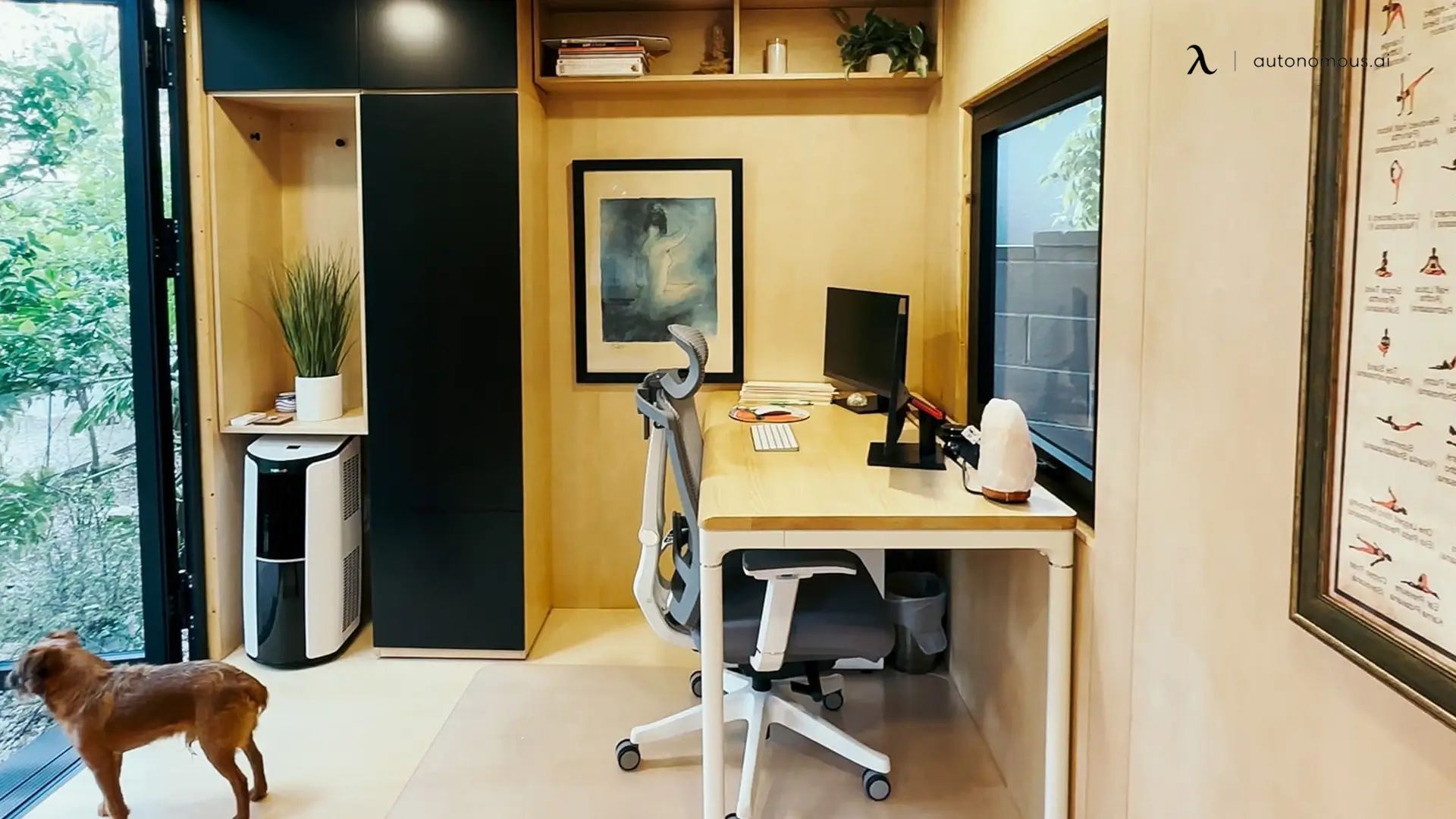
How To Soundproof Home Office From Outside Noise
If you're trying to focus on deep work or need peace for video calls, soundproofing your home office from outside noise is essential. Below are effective soundproof home office ideas that range from budget-friendly options to more permanent solutions:
1. Upgrade Your Windows
Windows are one of the most common sources of noise infiltration, especially if they’re single-glazed. Double-glazed windows are an effective way to reduce external sounds. They create an insulating barrier between the inside and outside, significantly decreasing sound transmission.
For a more budget-friendly solution, consider using window inserts—acrylic or glass panels that fit over existing windows and add an extra layer of soundproofing.
Pro Tip: If replacing windows isn’t feasible, consider applying acoustic window film to the glass. It helps reduce sound vibrations and adds some noise insulation.
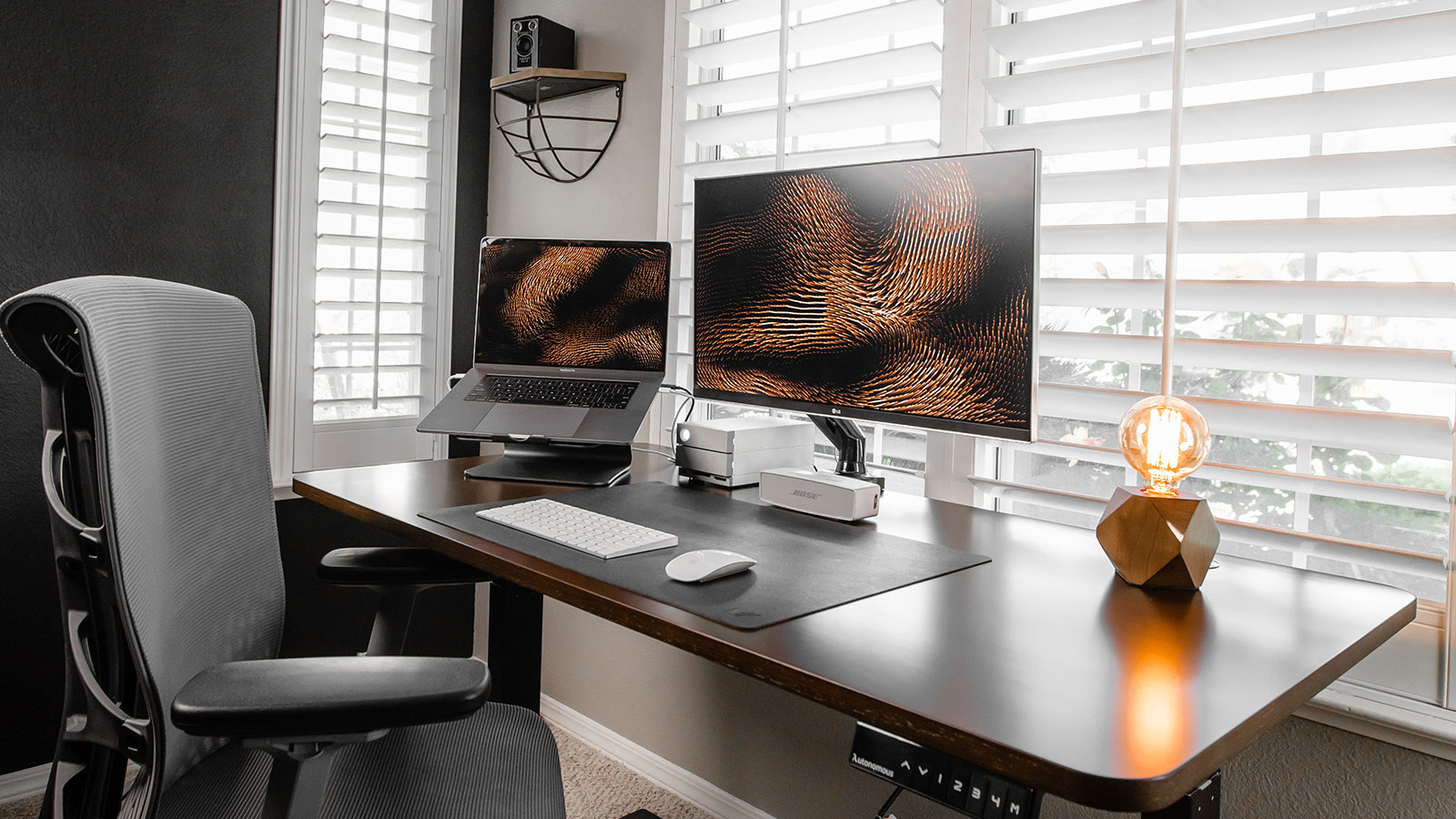
2. Install Heavy Curtains Or Soundproof Blinds
Thick, heavy curtains are one of the easiest and most affordable solutions for blocking outside noise. Opt for curtains made of dense materials like velvet or soundproofing fabrics.
Soundproof blinds can also be effective in reducing outside sounds. These blinds are thicker and can be rolled down or adjusted depending on your need for sound isolation.
Pro Tip: Make sure the curtains cover the entire window frame and reach the floor to minimize sound leakage from the edges.
3. Seal Gaps Around Doors And Windows
Air leaks are common culprits when it comes to letting noise into a room. Ensure all gaps and cracks are sealed using weatherstripping and caulking around windows and doorframes.
This simple method can reduce the amount of external noise entering your home office, particularly from busy streets or construction sites.
Pro Tip: If your door has a large gap at the bottom, install a door sweep to further reduce noise.

4. Soundproofing The Walls
Sound can easily travel through the walls, especially if you live in a townhome, apartment, or a house with thin walls. One effective way to soundproof your walls is by adding acoustic foam panels or soundproof wallpaper. These materials absorb sound and prevent it from bouncing off walls.
For a more substantial solution, you can install mass-loaded vinyl (MLV) or a soundproof drywall layer to block noise.
Pro Tip: If you can’t install soundproof drywall, try soundproof paint that contains microspheres to reduce sound transmission.
5. Create An Outdoor Sound Barrier
If your noise source is coming from outdoors (like street traffic or construction), you can build an outdoor barrier to block the sound before it enters your space.
Planting tall hedges or installing a privacy fence can help create a physical barrier that reduces the amount of external noise entering your home office. For more effective noise-blocking, consider soundproofing outdoor panels that you can attach to fences or walls.
Pro Tip: Adding greenery like trees or shrubs not only improves privacy but also absorbs sound, making your environment quieter and more serene.
How To Soundproof Your Home Office From Inside Noise
How to soundproof home office from inside noise is equally important. Whether it's the hum of appliances, footsteps, or conversations, addressing internal distractions will enhance your focus.
Here are some effective ways to soundproof your home office from internal noise:
1. Use Acoustic Panels And Foam
Acoustic panels are ideal for reducing internal noise and are particularly effective for echo or reflected sounds.
Installing foam panels or fabric-wrapped panels on your walls and ceiling helps absorb sound and prevent it from bouncing around the room. This is especially useful if your office has hard surfaces like wood floors or glass windows that amplify noise.
For an even more effective soundproofing system, consider bass traps for the corners of the room, which absorb low-frequency sound waves, creating a quieter and more focused workspace.
Pro Tip: Position the panels at reflection points—typically the first places sound bounces off—such as the area between your desk and the wall.
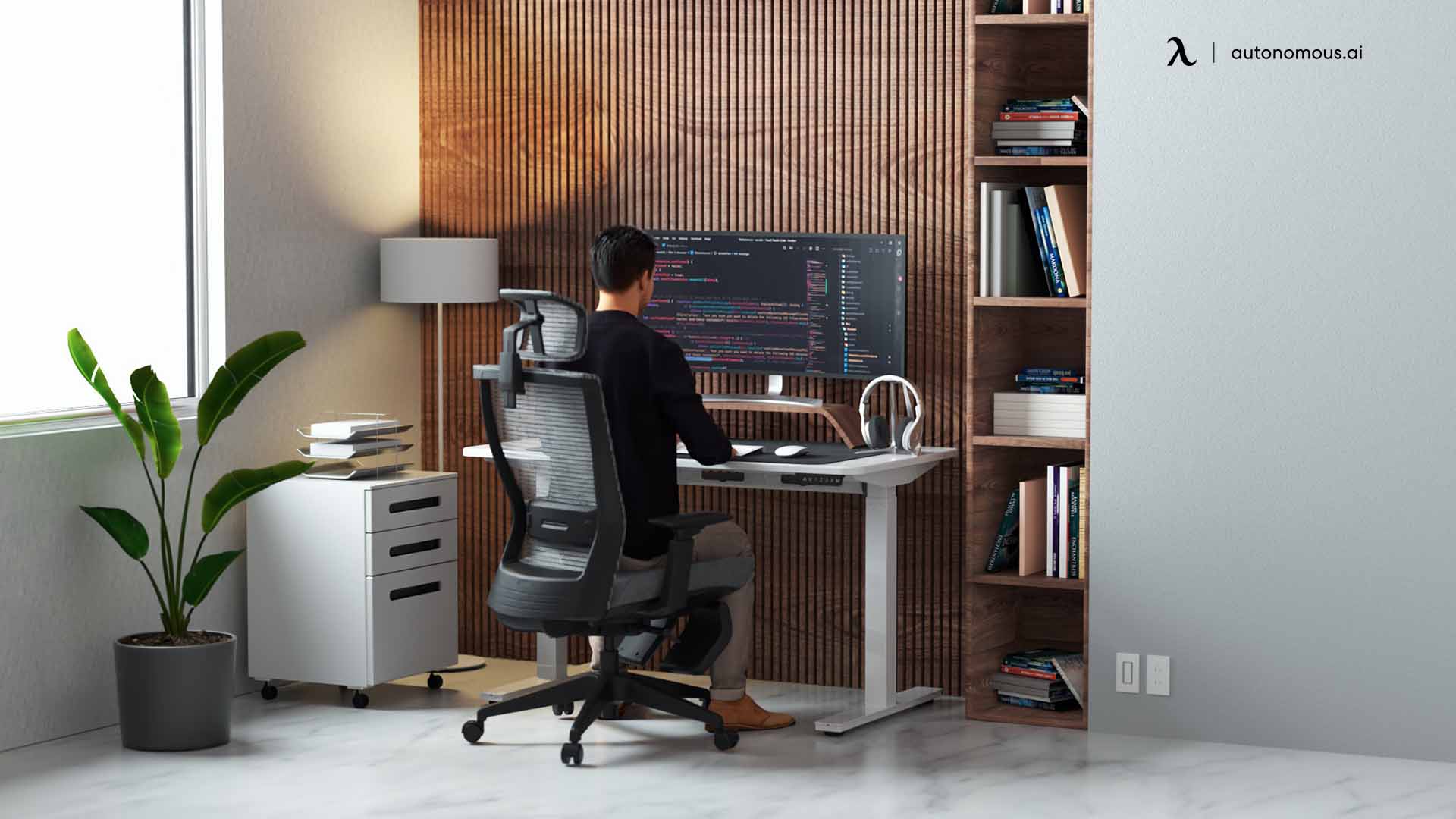
2. Add Soft Furnishings
To tackle internal noise, soft furnishings like upholstered chairs, sofas, and thick rugs work wonders. Soft materials help absorb sound, reducing reverberation that hard surfaces tend to create. Consider adding:
- Upholstered fabric office chairs and couches: These absorb sound and provide comfort.
- Thick rugs: Placing a plush rug on the floor will help dampen the sound of footsteps and movement.
Pro Tip: Adding a plush area rug under your desk setup can not only improve acoustics but also create a more cozy and inviting workspace.
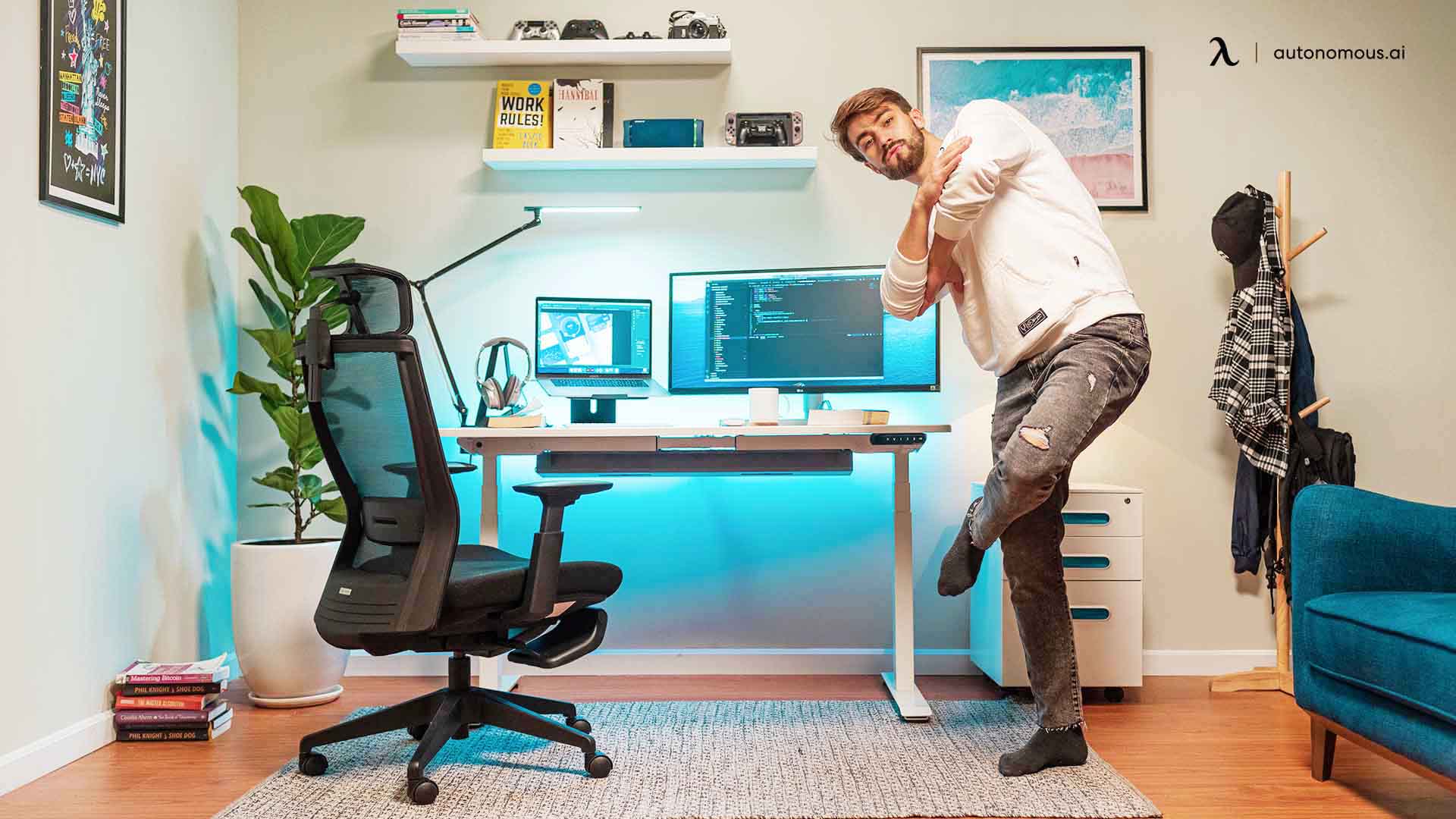
4. Soundproof The Floor
Floors can amplify noise, particularly if you have hard flooring like wood or tile. Adding carpets, rugs, or rubber mats to your office floor will help absorb sound and reduce echoes.
If you’re dealing with noise from below, consider installing acoustic underlays underneath carpeting to block vibrations and reduce sound transmission.
Pro Tip: If you have a lot of foot traffic near your desk, anti-fatigue mats can help with comfort and soundproofing by providing cushioning to absorb impact noise.
5. Use Noise-Canceling Equipment
For persistent internal noise, noise-canceling equipment like white noise machines or noise-canceling headphones can be incredibly helpful.
A white noise machine can help mask other sounds around you, and high-quality headphones can actively block out nearby chatter or household noises, allowing you to focus.
Pro Tip: Opt for over-ear noise-canceling headphones if you need complete isolation during calls or deep work sessions.
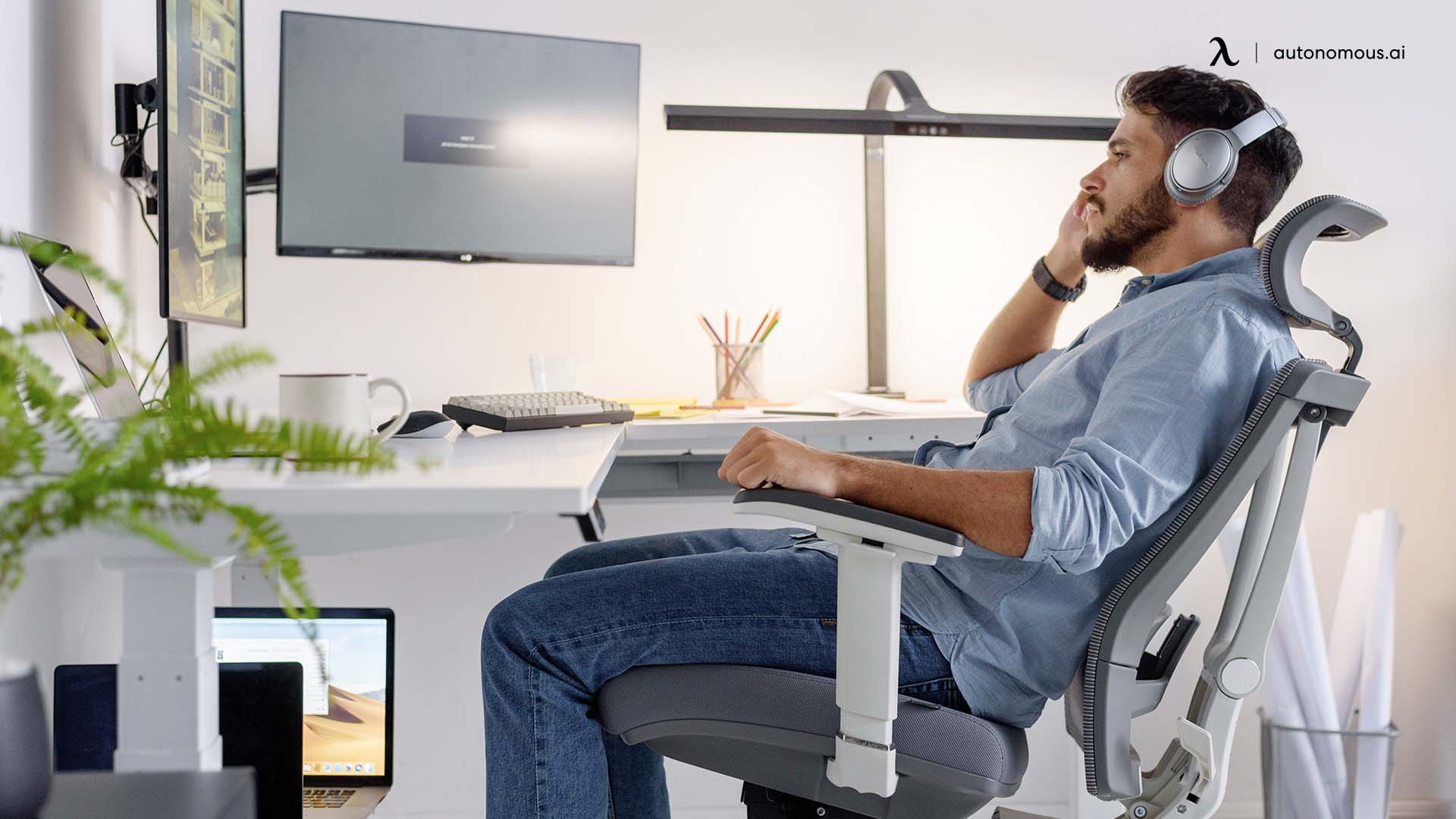
6. Divide The Room With Soundproofing Dividers
If you don’t have the luxury of a private room, soundproof room dividers or partitions can be a good option. These acoustic partitions help to contain noise and reduce sound transmission between different areas of the room. They are especially useful in open-plan offices where sound can easily travel across the space.
Pro Tip: Use freestanding acoustic screens that can be moved or adjusted depending on your space layout, giving you flexibility in managing sound.
7. Soundproof Paint
This might be new for most of you, but soundproof paint does exist, and it is known to reduce noise levels by 30%. The soundproof paint works with the help of microspheres that trap the noise and help with soundproofing.
This can be a great way to control noise, especially if you are in the building phase of your home office setup.
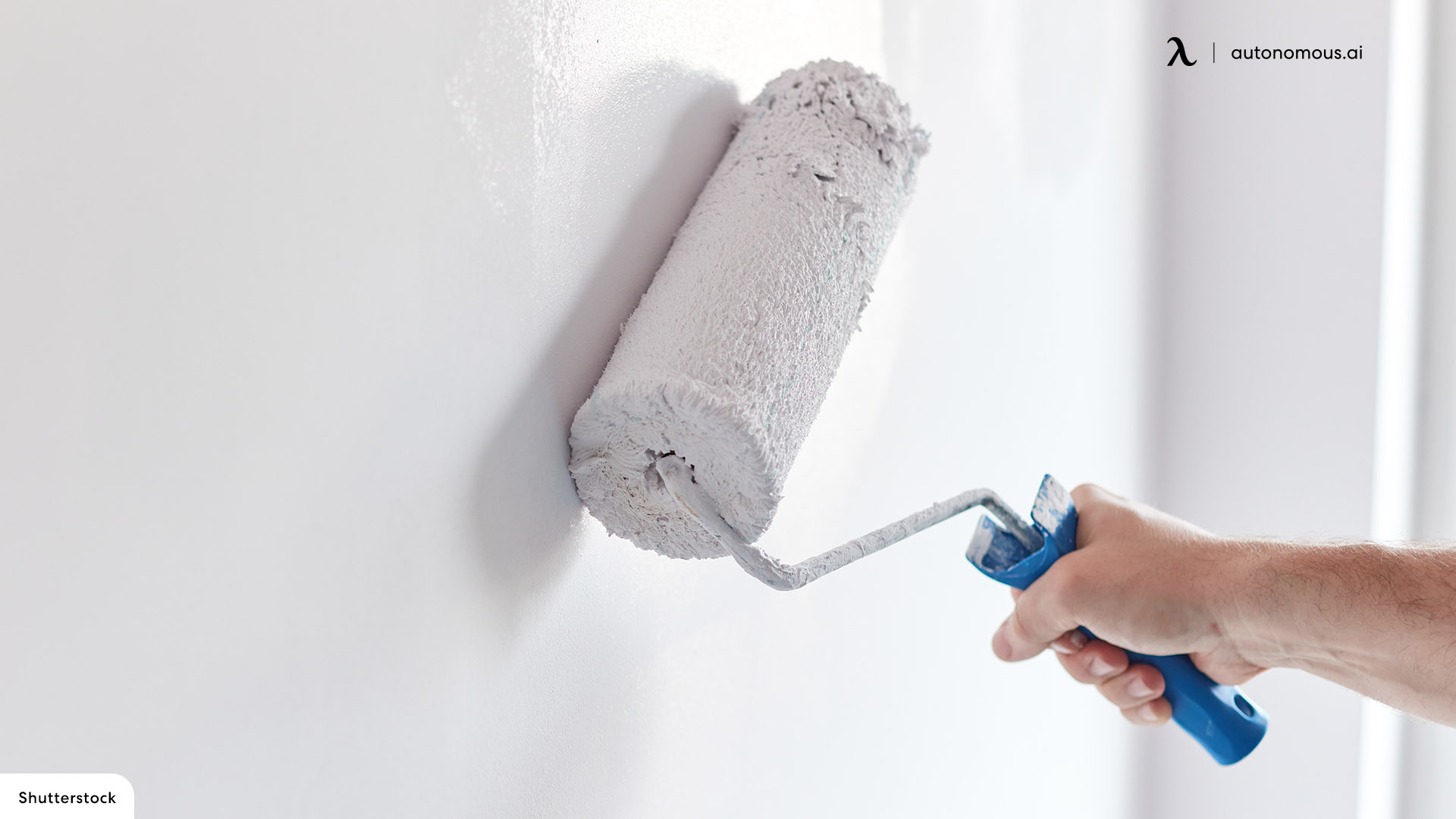
DIY Soundproof A Home Office: A Step-by-Step Guide
If you're looking for an affordable and hands-on approach to soundproofing your home office, you're in the right place.
DIY soundproofing a home office is not only cost-effective but also customizable to your specific needs. Whether you’re trying to block out traffic noise, household chatter, or the hum of appliances, here’s a simple, step-by-step guide on how to soundproof your home office and create a peaceful environment for work.
Step 1: Weatherstripping For Quick Wins
One of the easiest ways to DIY a soundproof home office to cut down on noise is by sealing gaps. Weatherstripping around doors and windows is inexpensive, simple to apply, and highly effective. By blocking small air leaks, you'll prevent unwanted sounds from sneaking in. It's a small step that makes a big difference.
Pro Tip: Check areas like door frames, window edges, and electrical outlets for hidden gaps that might be allowing sound to sneak in.
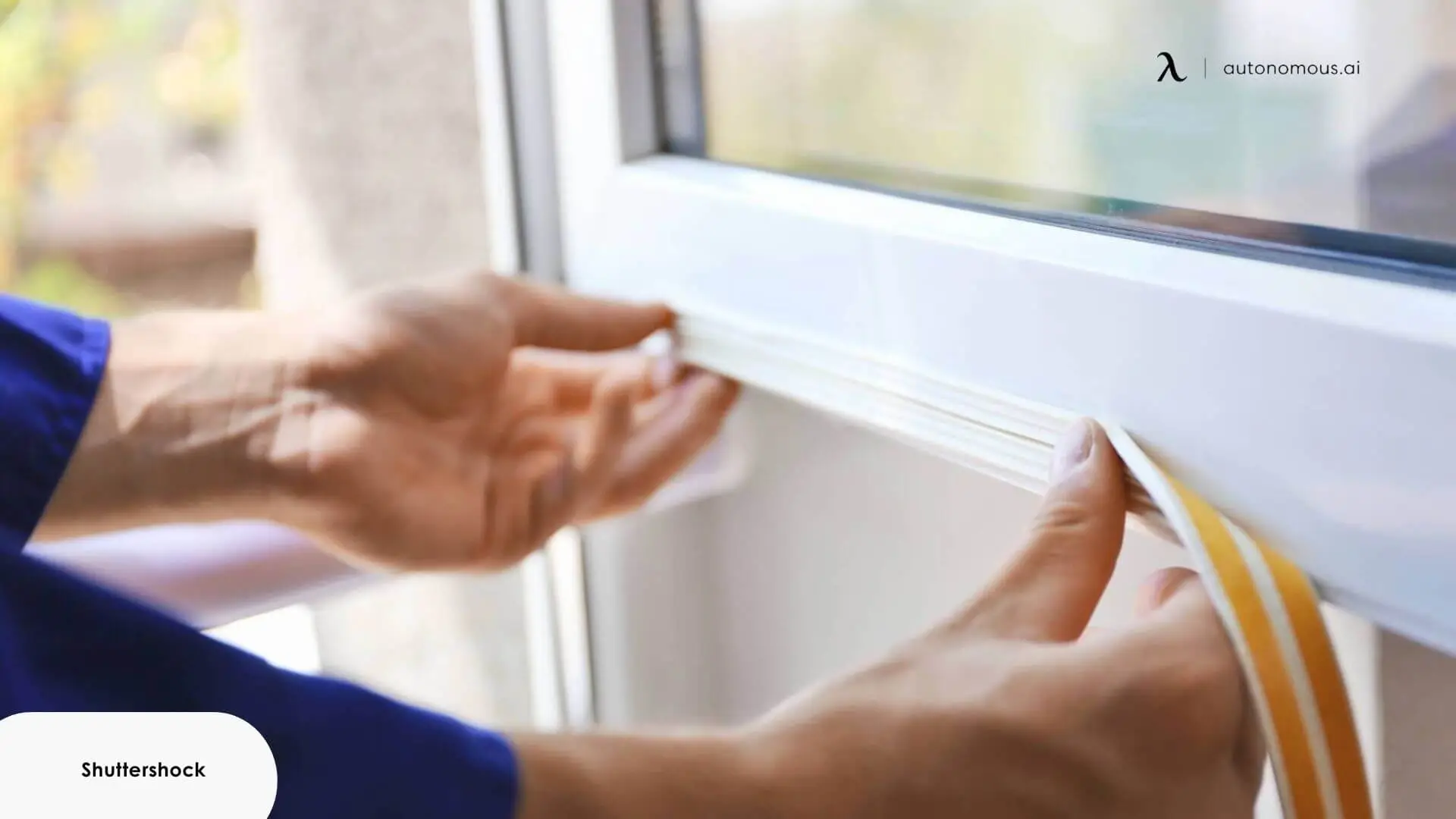
Step 2: DIY Acoustic Panels
While professional acoustic panels can be pricey, you can make your own DIY acoustic panels for a fraction of the cost.
All you need is some foam, fabric, and wooden frames. Cut the foam to size, stretch the fabric over it, and staple or glue it into the frame. Hang them on your walls to reduce sound reflection and minimize internal noise.
Pro Tip: Choose fabric with a tight weave for better sound absorption, and go for neutral colors to match your office décor.
Step 3: Soundproofing Your Door: The Low-Cost Fix
Your door might be the weak point in your soundproofing strategy. If replacing it isn’t an option, a door sweep is a quick, cost-effective way to seal gaps at the bottom. Combine this with weatherstripping along the edges for maximum sound isolation.
Pro Tip: If your door is hollow, consider filling it with foam or insulation for added noise blockage.
Step 4: Use Bookshelves As A Barrier
Bookshelves don’t just store books—they can also serve as noise blockers. You can opt to DIY some heavy bookshelves and place them along the shared wall can absorb sound and reduce noise transfer between rooms. Fill the shelves with books or dense objects to enhance their soundproofing ability.
Pro Tip: For maximum effect, place a bookshelf with a solid back against the wall that faces the most external noise (like the side of the house that faces the street).

Considering An Office Pod For Total Soundproofing
For those seeking ultimate soundproofing and privacy, a soundproof pod for home is an ideal solution.
These prefabricated rooms provide complete isolation from external and internal noise. Here’s why an office pod could be the right choice for you:
- Complete Noise Isolation:
A soundproofing office pod for home use is designed to block out all external noise, including traffic, construction, and household distractions.
- Acoustically Treated Environment:
Equipped with full insulation and whisper-quiet ventilation, work pods keep the workspace silent and comfortable.
- Flexible Setup:
You can place a work pod in your backyard, garage as an outdoor office pod to create a dedicated, noise-free office.
- Increased Privacy and Focus:
Having an office pod ensures you have a quiet, distraction-free zone to enhance productivity and focus.
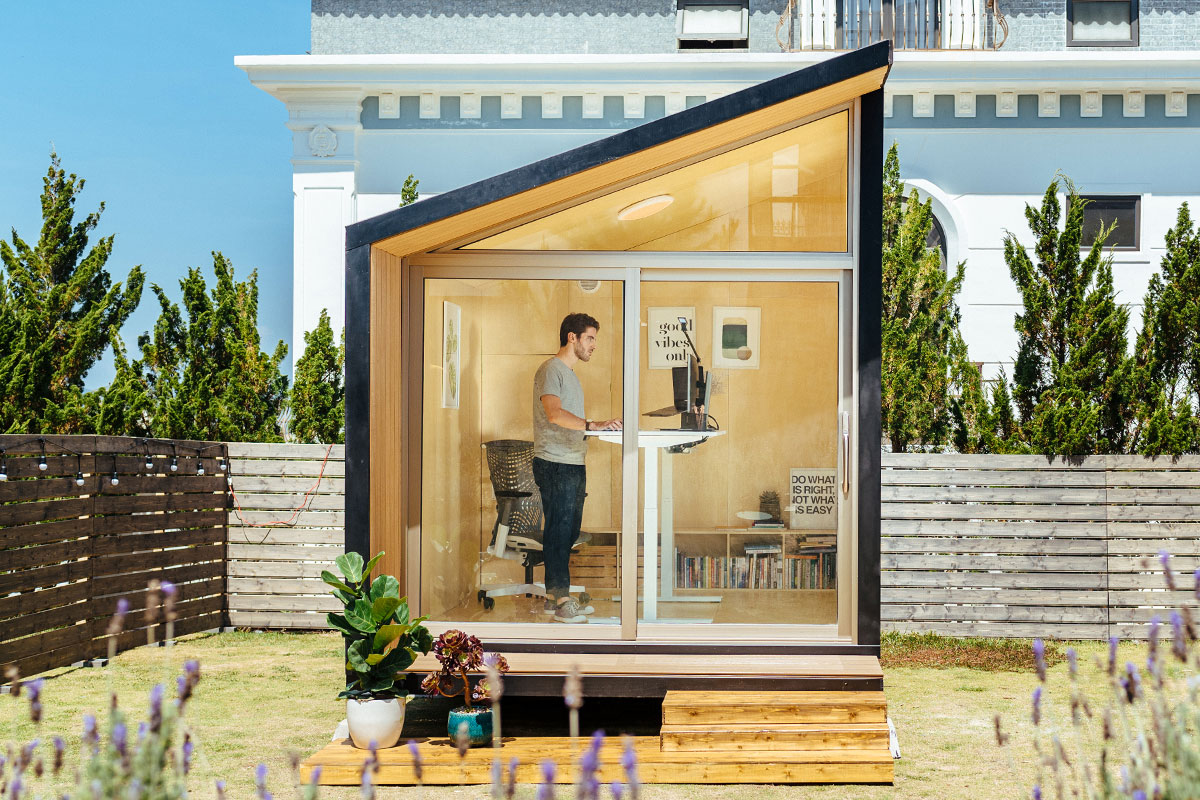
WorkPod
| Overall size | 8.5’W x 12’L x 11’H |
| Floorspace | 102 square feet |
| Ceiling height | 6.8’ to 9.3’ |
| Weight capacity | 2.9 tons |
| Door & Window dimensions, material (include glass) | Main door: 7.5’W x 6.8'H 3 windows: 1.1’W x 7.9’H Window material: Wooden frame, 5/16” tempered glass, composite wood cover Door material: Anodized aluminum frame, 5/16” tempered glass |
| Siding, roof, floor & balcony material | Siding: Plywood 1/2”, wooden frame, honeycomb paper, plywood 3/8”, bitume, housewrap, vinyl siding Roof: Roof shingles Floor: Plywood Balcony: Composite wood |
| Electrical devices | 1 RCB (Residual current breaker) 3 Wall outlet (Universal wall sockets) 1 Ceiling light switch 1 Ceiling light 1 Ventilator switch 1 Ventilator 66ft power cable with 2 connectors |
| Power input | Maximum voltage: 110V AC (US standard) Maximum current: 25A Maximum power dissipation: 2750W |
| Interior furniture | Unfurnished option: 1 Bookshelf, 1 Electrical Cabinet Furnished option: 1 Autonomous Desk, 1 Autonomous Chair Ultra, 1 Monitor Arm, 1 Cable Tray, 1 Filing Cabinet, 1 Anti-Fatigue Mat, 1 Bookshelf, 1 Electrical Cabinet |
| Compatible with | Portable air conditioner: A/C units with dimensions smaller than 22” L x 20” W x 88” H and a 5.9” vent hole diameter will fit well. Heater: A small personal heater is more than sufficient. |
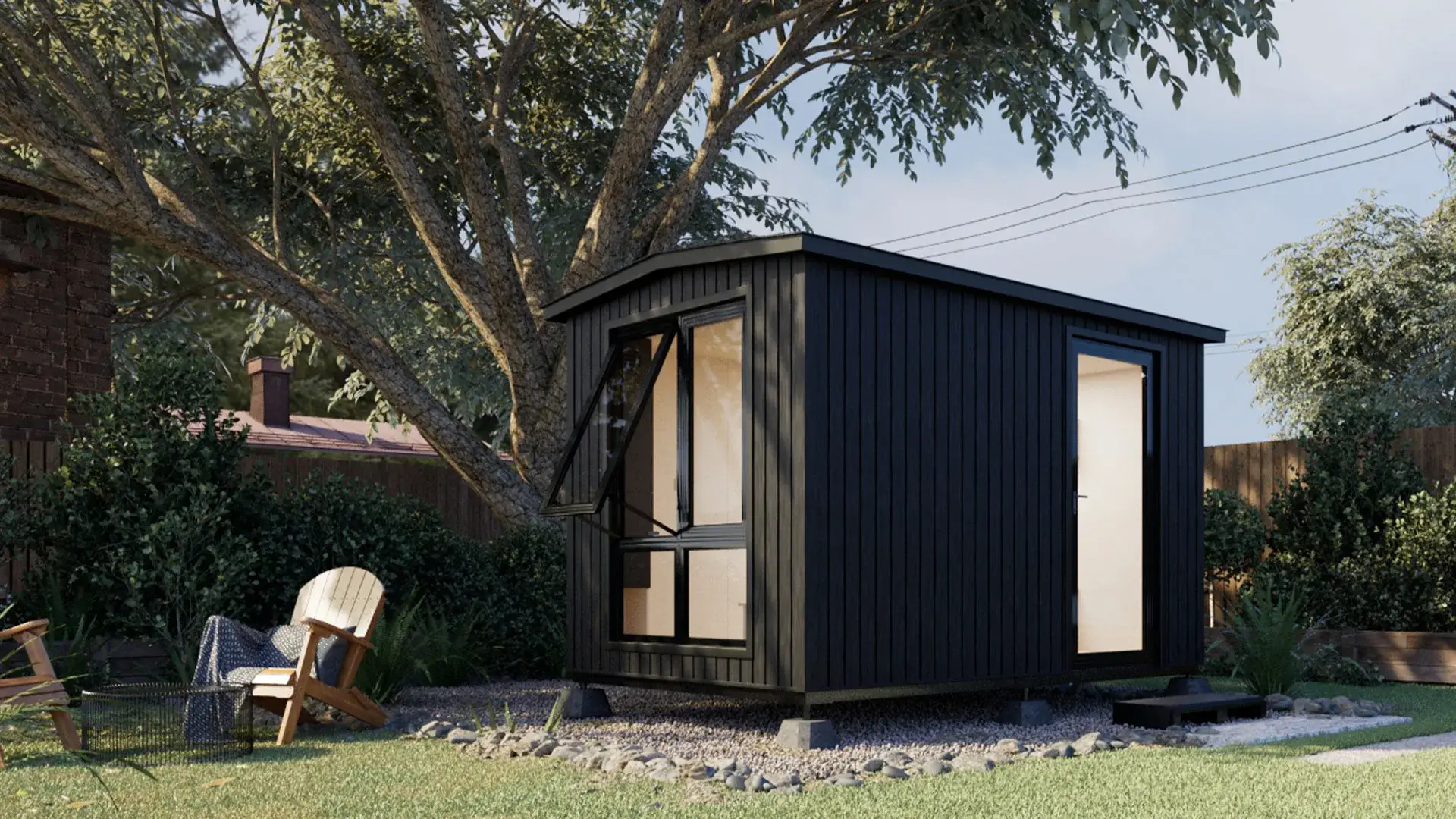
WorkPod Versatile
| Overall size | 8’4”W x 12’6”L x 9’10”H |
| Floorspace | 105 square feet |
| Ceiling height | 7’3” |
| Weight capacity | 2.9 tons |
| Pedestal | 18”W x 43”L x 7”H |
| Door & Window dimensions, material (include glass) | Main door: 39”W x 89”H Large window: 59”W x 81”H Small window: 39”W x 39”H Window & door material: Powder coated aluminum, 5/16” tempered glass |
| Siding, roof, floor & balcony material | Siding: Plywood 1/2”, steel frame, honeycomb paper, plywood 3/8”, bitume, housewrap, vinyl siding Roof: Roof shingles Floor: Plywood Pedestal: Steel frame & wood plastic composite |
| Electrical devices | 1 RCB (Residual current breaker) |
| Power input | Maximum voltage: 110V AC (US standard) Maximum current: 25A Maximum power dissipation: 2750W |
| Furniture (optional) | Cabinet, Desk, Small & Big Bookshelf, TV Shelf, Foldable Sofa Table & Electrical Cabinet* (*Electrical Cabinet always included) |
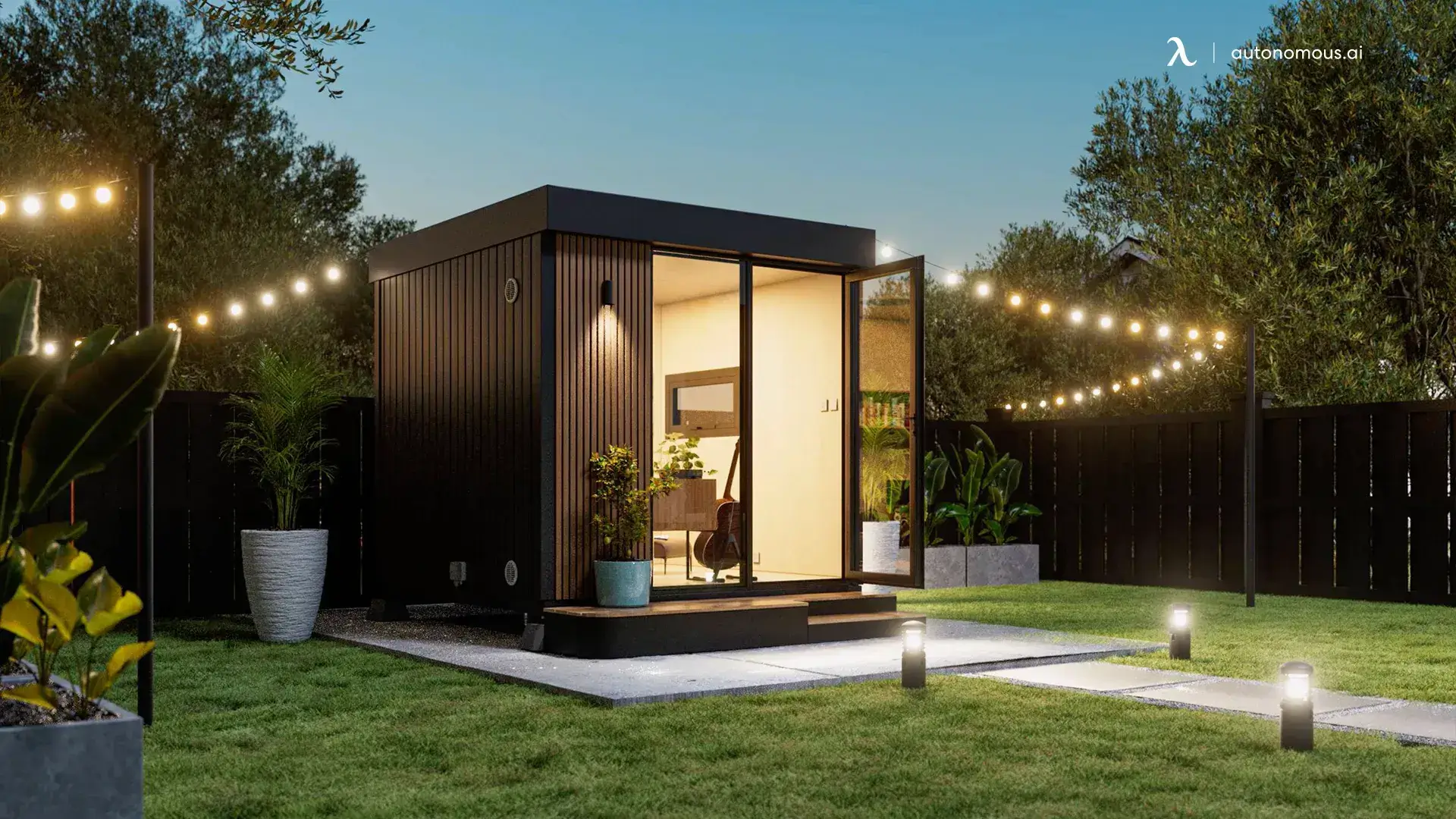
WorkPod mini
| Dimension | Overall size: 8’7"W x 9’L x 9’3"H Floorspace: 80 square feet Ceiling height: 7’3" Weight capacity: 2.3 tons (including Pod body) Pedestal: 24"W x 103"L x 9"H |
| Door & Window dimensions, material (include glass) | Main door: 37"W x 89"H (open side) & 33"W x 89"H (fixed side) Window: 43"W x 20"H Window & door material: Powder coated aluminum, 5/16" tempered glass |
| Siding, roof, floor & balcony material | Siding: Plywood 1/2" , steel frame, honeycomb paper, plywood 3/8", bitume, housewrap, vinyl siding Roof: Metal roofing Floor: Plywood Balcony & Pedestal: Steel frame & wood plastic composite |
| Electrical devices | 1 RCB (Residual current breaker) 2 Wall outlet (Universal wall sockets) 1 Ceiling light switch 1 Ceiling light 1 Wall light 1 Ethernet wall port 66ft power cable with 2 connectors |
| Power input | Maximum voltage: 110V AC (US standard) Maximum current: 25A Maximum power dissipation: 2750W |
FAQs
1. How to make a room 100% soundproof?
Making a room 100% soundproof is a challenge, as no solution is entirely perfect. However, you can achieve near-complete soundproofing by using a combination of methods.
- Use double-glazed windows, solid-core doors, and acoustic panels on walls and ceilings.
- Installing mass-loaded vinyl (MLV) and soundproof insulation between walls can help further block sound.
2. How much does it cost to soundproof a 12x12 room?
The cost of soundproofing a 12x12 room depends on the methods you choose:
- DIY methods such as weatherstripping, acoustic foam, and heavy curtains can cost between $200 and $1,000.
- For more professional solutions, you could be looking at a budget range of $2,000 to $5,000. The price also depends on the level of soundproofing and the materials used.
2. How do you soundproof an open-plan office?
To soundproof an open-plan office, focus on these techniques:
- Ceiling baffles or suspended panels can absorb sound from above.
- Install soundproof doors between different office sections.
- If privacy is essential, soundproof office pods are excellent for reducing noise in shared spaces.
3. How to cancel out noise when working from home?
To cancel out noise when working from home:
- Play white noise using a white noise machine or a fan to mask ambient noise.
- Seal gaps in doors and windows with weatherstripping or caulking to block out external noise.
- Install soundproof curtains or acoustic panels on walls to reduce noise from other rooms or the outside.
4. How do I reduce noise between shared walls?
Noise between shared walls can be particularly challenging, but there are effective ways to reduce sound transmission:
- Install acoustic panels on the shared wall to absorb sound waves before they travel through.
- Consider using soundproofing wallpaper or fabric-covered wall panels for an additional layer of sound absorption.
- Apply acoustic sealant to fill in any cracks or gaps along the wall or seams, preventing sound leakage.
5. How can I soundproof my home office?
If you're wondering how to soundproof your home office, start by identifying the sources of noise—whether it’s from outside (street traffic, construction) or inside (family members, appliances). Here's a quick guide:
- Seal gaps around doors and windows using weatherstripping or caulking.
- Use acoustic panels or foam on walls and ceilings to reduce sound reflection.
- Add soft furnishings like rugs and upholstered furniture to absorb sound.
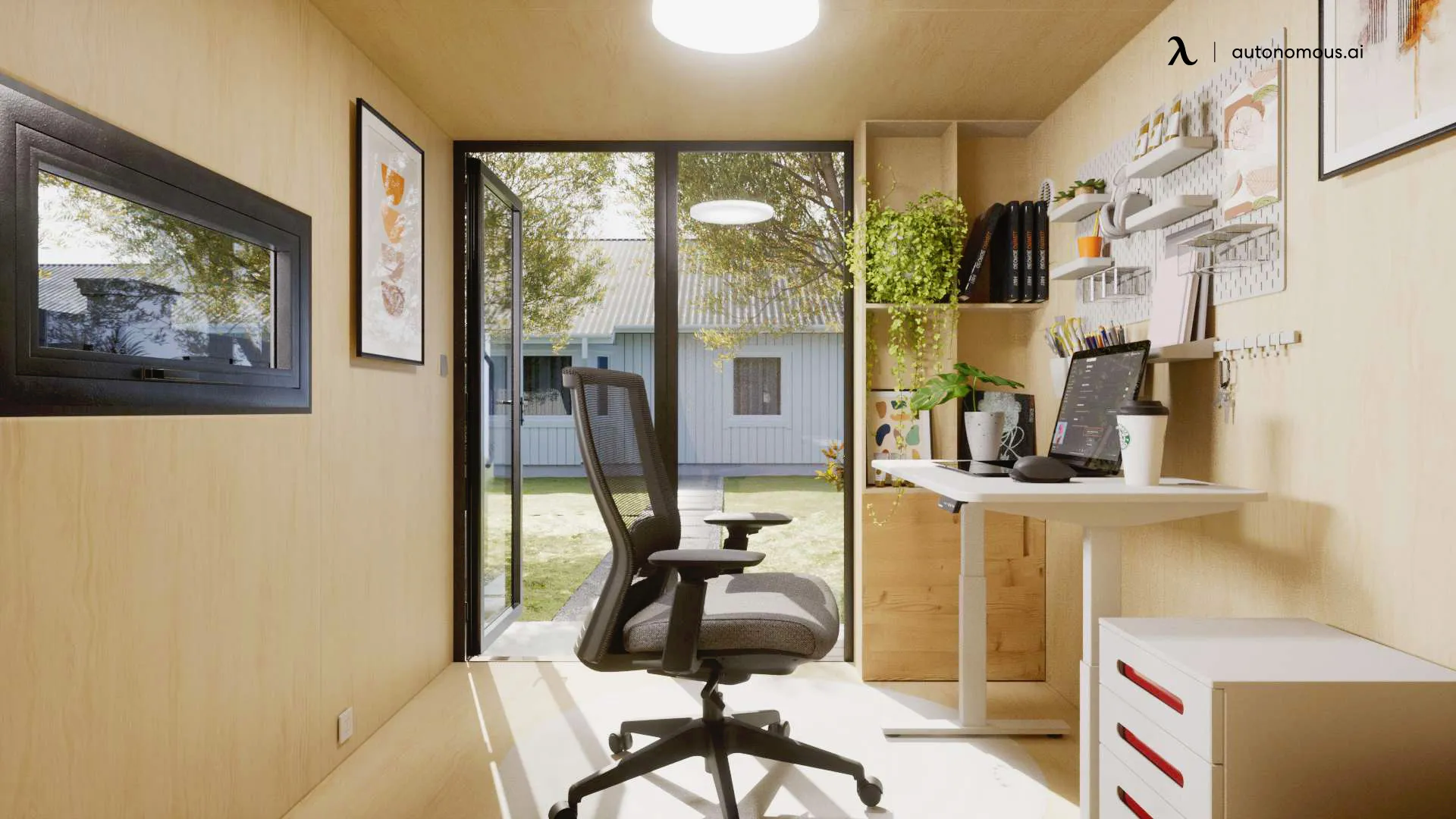
Conclusion
Creating a soundproof home office is essential for boosting productivity and reducing distractions. Whether you’re struggling with external noise like street traffic or internal disruptions from your household, there are a variety of soundproofing methods to suit your needs and budget.
From DIY solutions like sealing gaps and adding acoustic panels to more permanent options like double-glazed windows and solid-core doors, you have plenty of tools to create a quieter workspace.
If you're looking for complete noise isolation, consider a backyard office shed. These pods provide an acoustically treated, private workspace that ensures you remain focused and productive, no matter the noise around you.
By applying the right strategies, you’ll turn your home office into a peaceful, distraction-free zone that promotes deep work and higher productivity.
Spread the word
.svg)





